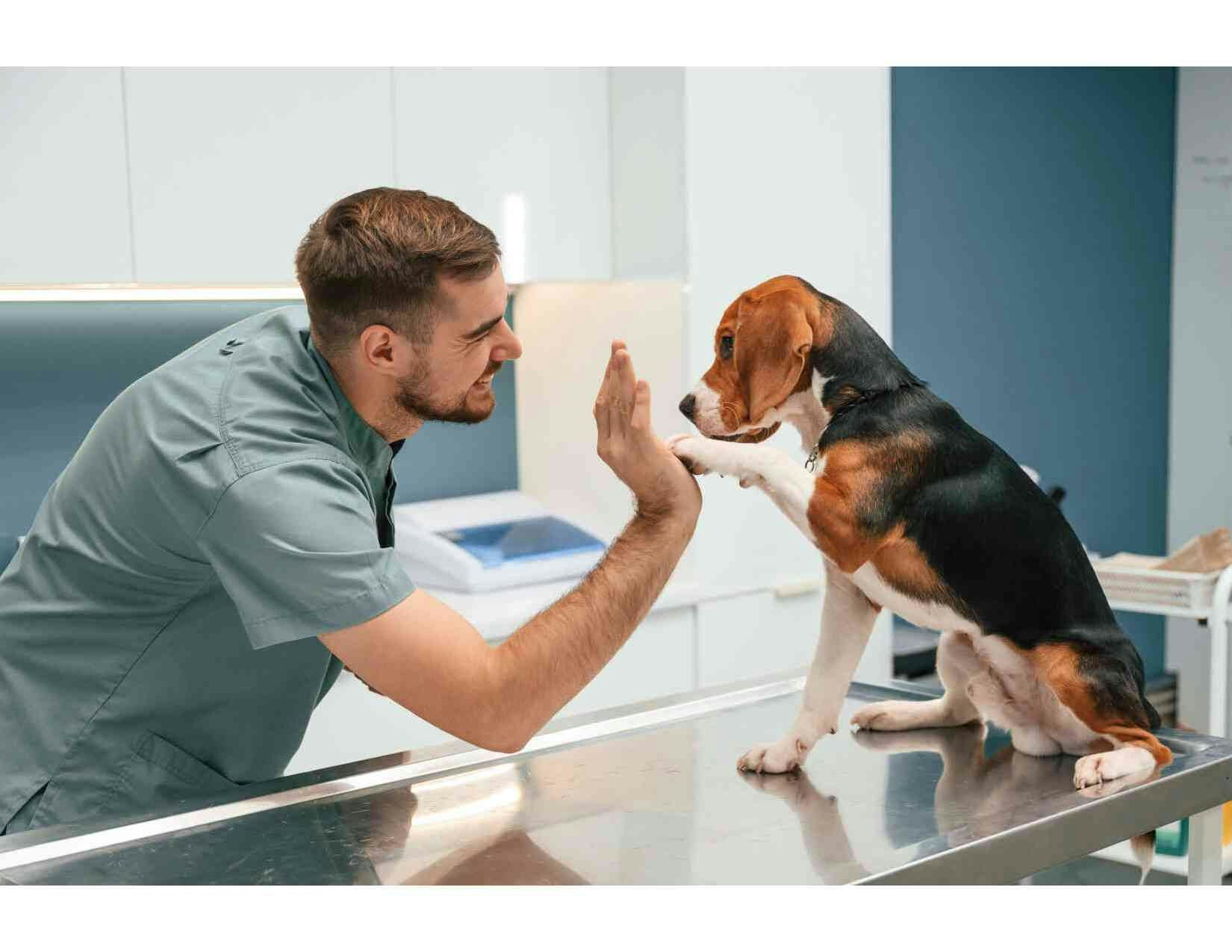Unlimited support to keep you safe and stress-free
Discover how our Health & Safety experts keep you safe with round-the-clock support

Peninsula Team, Peninsula Team
(Last updated )

Peninsula Team, Peninsula Team
(Last updated )
In this guide, we'll discuss hazards within a veterinary practice, safety measures you can take, and how Peninsula can help you with your risk assessment.
Running a veterinary practice means protecting the wellbeing of your staff, visitors, and the animals you're treating. To do so, you are legally required to carry out a risk assessment of your workplace. But it must consider the risks animals in your workplace pose as well.
If a hazard isn't assessed correctly, it can have severe consequences for your business. For example, a member of staff or visitor could be injured and as a result, you could face legal, financial and reputational damages.
In this guide, we'll discuss hazards within a veterinary practice, safety measures you can take, and how Peninsula can help you with your risk assessment.
Discover how our Health & Safety experts keep you safe with round-the-clock support
A veterinary risk assessment is the process vets follow to assess the risk of harm that hazards in their workplace present. This way, they have a full understanding of what's likely to cause injury to staff, visitors or animals, and ultimately, what protections they need to put in place.
Employment legislation requires every business to perform risk assessments. And, if a company employs five members of staff or more, the details of their findings must be noted down.
Vets have to follow workplace legislation, as well as laws relevant to their practice. They'll have to comply with the Health and Safety at Work Act (1974) - which requires employers to provide a safe place for their staff to work. As well as this, they must follow UK Fire Safety Regulations where possible.
They'll also have to follow:
Several risks can occur when working in veterinary practices with animals. For example, their presence can cause allergic reactions in some individuals.
Let's explore some other risks below:
It's probably not surprising that working with animals can increase the risk of physical injury occurring. Whilst they might be well-trained, their behaviour can still be unexpected.
For example, if an animal is threatened by another in your surgery, it might become aggressive. Consequently, it could bite another individual or animal.
Another risk of working with animals is that it increases the chance of infection occurring. Like us, animals carry germs - and human exposure to such bacteria can be harmful.
For example, if an animal has ringworm and is left untreated, they could scratch a human and cause them to develop ringworm too.
Animals can also increase the risk of your employees developing musculoskeletal issues. These are injuries or disorders that affect the muscles, tendons and joints of an individual.
For example, this can occur if your staff are lifting animals without support (or incorrectly) repetitively.
There are a range of risk assessments you could use to ensure all hazards are considered in relation to risk. All have different objectives, so ensure you're aware of each one so you know which one to use.
These include:
Failure to take action when identifying a hazard within your practice may lead to serious consequences. For example, if a risk assessment isn't carried out, you might fail to implement protective measures - such as PPE. As a result, infection spreads and causes harm to one of your staff members.
This may also lead to compensation claims, as well as the Health and Safety Executive investigating your workplace. Consequently, you might face legal, financial and even reputational damage.
A veterinary risk assessment involves five main steps. You must perform each one thoroughly, to ensure you don't miss a hazard or fail to protect staff adequately.
The steps are:
The important thing to remember with risk assessments is that you should conduct one every time something changes in your workplace. For example, if you hire more staff, or implement a new service - you must assess the risk these changes create.
We've also developed our very own risk assessment template which is free for you to download. This can be found online via the link below.
Your free guide will explain how to support your staff through menopause at work, helping you cut risk and boost productivity.
It's your job to support animals, and it's our job to support you.
Our qualified Health & Safety experts will come to your practice and assess the hazards present. Afterwards, they'll give you results of your risk assessment, and offer guidance on how you can keep your business safe.
Plus, when you work with Peninsula, our employment law experts will produce all the documentation you need to maintain your legal compliance. Alternatively, if a problem arises unexpectedly - we provide expert advice 24/7, 365 days a year.
So, whether you need help assessing the risk of harm within your practice, creating and implementing workplace safety procedures, or simply need advice on your recruitment process - we can support you whatever the circumstances.
We take care of everything when you work with our Health & Safety experts. Contact us on 0800 028 2420 and book a free consultation with a Health & Safety consultant today.
Got a question? Check whether we’ve already answered it for you…
When AI meets 40 years of Peninsula expertise... you get instant, expert answers to your HR and health & safety questions
